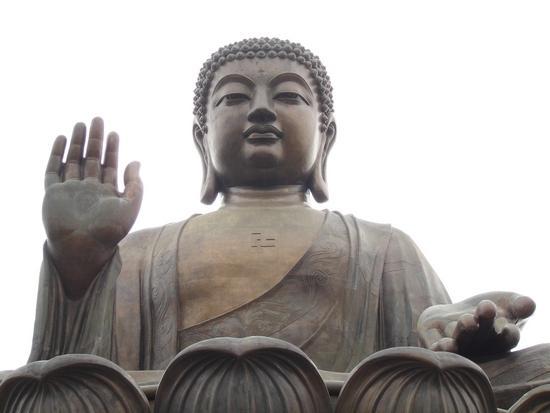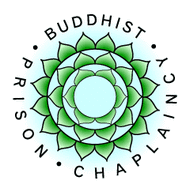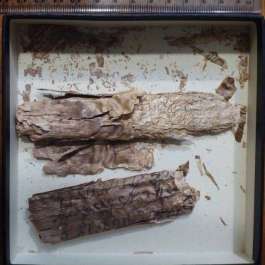
Dr. Bill. M. Mak graduated from Peking University and is currently based in the Department of Indological Studies at Kyoto University. This is his spiritual journey.
My Journey as a Buddhist, from Diamond Sutra to Diamond Sutra (Part 1)
My first memory of something related to Buddhism was the sound of sutra-chanting where I heard in a Zen monastery in Lantau when I was a young child. Though neither of my parents was Buddhist, my mother a Protestant Christian and father a freethinker, they were nevertheless sympathetic to Buddhism. My father, beside being a philanthropist who always busied himself with various charity projects, was much interested in Buddhist teachings. During the summer vacations, my father would bring me to some of the remote monastery in Lantau Island or New Territories for meditation sitting and to live with the monks. Those early morning chanting had always held a special fascination for me. It was like sound of waves washing into my whole being, awe-inspiring and exhilarating at the same time. Later I found out that it was called the Diamond Sutra.
In my childhood days, I had always had my hair trimmed very short and the monks would tell me jokingly that I look just like a novice. An old nun even once remarked that I had been a yogi in my past live which I only half-believed. When I sat for meditation as a seven years old child, the monks took it nonetheless very seriously and would give me a bat if I was dozing away. The beating I received, which was harder than necessary, left me a very negative impression which lasted for years. Little did I know at that time that the monk who delivered the blow would become my first Buddhist teacher years later.
It was not until my university years when I started to take serious interest in Buddhism. At that time, I gave up my studies in science and turned to linguistics with a specialization in Sanskrit. I was fascinated by the ancient religious texts and in particular, the Indian religions which Buddhism was a part of. My multilingual bookcase was soon filled with books like the Bible, Bhagavadg?t?, the Japji of the Guru Granth Sahib, the Yogas?tra and also the Diamond S?tra. As a linguistic student, though I could read through the Diamond Sutra in Sanskrit, its meanings completely escaped me as it was so unlike anything I had read. For over years, this Buddhist sutra remained an enigma to me.
It was almost ten years after I first started reading the Diamond Sutra when I finally found the need to understand it completely. The reason why I could understand only the surface meaning of the text but not its true meaning was that, as I thought at that time, because I was not a Buddhist. After all texts were all written for specific audience in mind and without proper context and background knowledge, they could not deliver the intended message. Thus with this desire to gain the “insider’s view” I decided to learn more about the religion and eventually, became a Buddhist.
With my years of training in science, I had always been a diehard skeptic and religious conversion was not an easy one. Unlike Christianity where there were churches with open doors and priests and missionaries ready to answer every single one of your religious queries, the Buddhist door was an iron door tightly shut. It was a tortuous process, but thanks to my father’s Buddhist friends and other Buddhist teachers whom I came across one after another, the Buddhist faith gradually became clear to me. At a more personal level, I began to understand that Buddhism was a path of self-cultivation. Though I did not aspire to become enlightened, it became apparent to me that the Buddhist path was a well-trodden one, praised by the wise ones and made people only into better persons.
My life was gradually becoming surrounded by everything Buddhist. After years of exciting but rather uninspiring work, which inflated my asset and my ego, I took the very humbling path of resuming my Buddhist studies once again at Hong Kong University. I also took the time to explore and find out for myself what the Buddhists and the Buddhist communities were doing, to experience for myself whether the practice lived up to the theories. Perhaps most importantly, I started to gain many Buddhist friends. It was due to the positive influence of these kaly?namitra-s that a certain Buddhist identity took root in me. In my mind, they were the embodiment of wisdom and compassion and I too want to become one of them. Looking around in our society, it is hard to believe that there are truly people who are wise and yet kind and friendly at the same time, tolerant enough even to people who do not share the same faith – these are the Buddhists.
After I took my refuge in the Three Jewels and my lay precepts from my first Buddhist teacher who was from the Zen tradition, the chanting of Diamond Sutra thus became my daily homework. As my understanding of the Buddhism at both levels of intellect and faith deepened, I began to appreciate the beauty of the Sutra. In retrospect, it was a very liberating experience to shed with “thunderbolt wisdom” all the false identities I had built up for myself, which was defined by labels such as career, wealth or even trivial things like education or clothes one puts on. In a place like Hong Kong where everyone seemed to be trapped in a rat race for wealth and status, unable to see their existence beyond what they possessed materially or nominally, leading the imaginary life of pleasure they created in their own minds, the Sutra breathed a fresh air, bringing peace, kindness, understanding and other human virtues to a world of madness.
My Buddhist identity became something I treasured very much and something I took a special pride of. In the following years, due to my academic pursuit, I had to travel around the world, first to mainland China, then Germany and Japan. It was my encounter with other Buddhists in these countries which made me constantly reflect on this identity I had created for myself. Little did I expect that such encounter led to a great transformation within me, both in terms of my identity as a Buddhist, as well as my understanding of Buddhism as a world religion at large.











